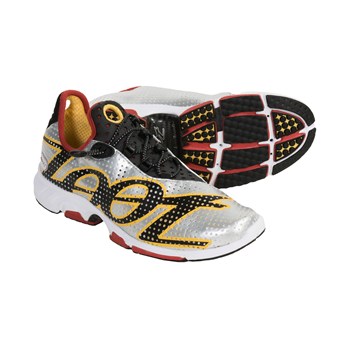It’s no secret that I like to run. Since I returned to this sport a few years ago, I’ve logged countless miles, run city streets and wilderness trails, in 40 degree heat and in blizzard conditions, on my own and with friends, and earned a few medals as well. But I am learning that the for me, the point of running is about more than medals or races. It is about the intentional practice of setting goals and achieving them.
So I have realised that running, for me, is the the laboratory in which I study the art of ‘optimal performance’. What I learn in this lab has direct implications on the rest of life. Running has taught me so many lessons. Lessons such as:
Create a plan, track your progress, adjust as you go forward. Learning to perform well in endurance sport requires continual small corrections. Pay attention to your stride length and cadence. Mind which part of the foot you are landing on. Think about your swimming stroke. Adjust the position of your elbows as you pull. Change the height of your saddle. Tweak your diet. Alter the balance between carbs and protein. Training is never about mindless repetition, but always a mindful process. In all other endeavours, we also need to continually readjust our habit to make sure we are on course for our goal.
Accept weakness. Unfortunately, injuries are a part of training. I don’t think I’ve ever met a serious athlete who hasn’t had to deal with them in one way or another. But how we deal with them is important – the worst thing to do is to ignore them. We frequently have to adjust our training plan, or re-evaluate our goals. I have had to to take long periods away from running, and indeed had to re-learn how to run, to cope with knee pain and ITB tightness. I have friends who have had to undergo invasive surgery. But we always do better when we acknowledge the problem early. Small niggles can be fixed before they become serious injuries, even if it takes humility to recognise that your body has a problem.
On a related note, I’ve learned that not all pain is good, not all pain is bad. The ‘No Pain No Gain’ mantra is not helpful. To become a good endurance athlete you must become intimately familiar with different types of pain. It hurts to do interval workouts, and yet they are amazing for improving your lactate threshold. It hurts to tear a muscle, and that does you no good at all, and must be acknowledged and treated immediately.
Our weakness do not need to define us, but they must be acknowledged and respected.

But I think the most important lesson I have learned is know your mission. Training for a 5k is very different than training for an ultramarathon. The former requires tempo runs and interval training, the latter require packing a bag with plenty of water and sandwiches and going out for a day-long run. But I have found that once you are clear about what your mission is, no matter how difficult a task you have set yourself, the way forward suddenly becomes straightforward. I’m fortunate to have friends that have gone from sedentary lifestyles to running marathons and triathlons. These challenges often seem daunting at first, but I’ve observed that once a commitment is made to a specific mission, it then simply becomes a question of working methodically through a known process to arrive at the goal. And it’s great to be surrounded by a friends who are just as passionate about achieving excellence as I am. It is hard to be on a mission by yourself. In this, and every other area of life, I’m learning just how valuable it is to find a community that is oriented around a mission that you believe in.